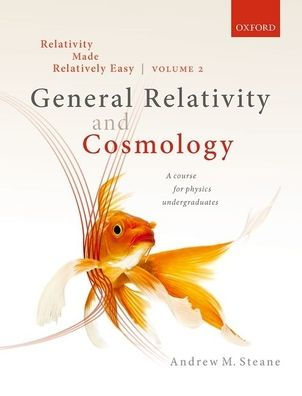Following on from a previous volume on Special Relativity, Andrew Steane's second volume on General Relativity and Cosmology is aimed at advanced undergraduate or graduate students undertaking a physics course, and encourages them to expand their knowledge of Special Relativity.
Beginning with a survey of the main ideas, the textbook goes on to give the methodological foundations to enable a working understanding of astronomy and gravitational waves (linearized approximation, differential geometry, covariant differentiation, physics in curved spacetime). It covers the generic properties of horizons and black holes, including Hawking radiation, introduces the key concepts in cosmology and gives a grounding in classical field theory, including spinors and the Dirac equation, and a Lagrangian approach to General Relativity.
The textbook is designed for self-study and is aimed throughout at clarity, physical insight, and simplicity, presenting explanations and derivations in full, and providing many explicit examples.



